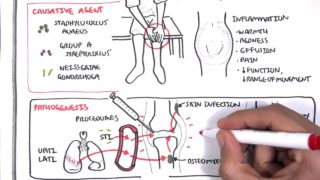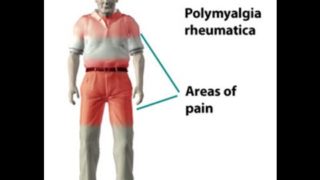Cubital Tunnel Syndrome – Everything You Need To Know – Dr. Nabil Ebraheim
Dr. Ebraheim’s educational animated video describes the Ulnar Nerve Anatomy - Cubital Tunnel Syndrome.
The ulnar nerve originates from the C8-T1 nerve roots which form the medial cord of the brachial plexus.
The ulnar nerve runs down the arm where it passes behind the medial epicondyle of the humerus at the elbow is.
The Ulnar nerve does not give branches in the axilla or in the upper arm.
It starts giving muscular and cutaneous branches in the upper forearm and hand.
After the ulnar nerve passes behind the medial epicondyle, it enters the forearm between the two heads of the flexor carpi ulnaris muscle.
As the ulnar nerve passes behind the medial epicondyle, it may become compressed or irritated.
The ulnar nerve travels through a tunnel of tissue (cubital tunnel) that runs under the medial epicondyle.
Pressure on the nerve at the elbow can cause numbness or pain in the elbow, hand, wrist or fingers.
In the case of the Ulnar nerve compression in the elbow: we notice Tinnel’s sign which is:
- a tapping technique performed to test for symptoms of ulnar nerve entrapment at the elbow(cubital tunnel syndrome).
- Tapping on the nerve causes electric shock, tingling and numbness in the medial two fingers much like when hitting the funny bone.
The nerve gives branches to the flexor carpi ulnaris and the medial half of the flexor digitarum profundus.
The ulnar nerve travels alongside the ulna bone of the forearm into the wrist.
As the nerve descends into the forearm, it stays medially above the flexor digitarum profundus and under the flexor carpi ulnaris, giving branches to those muscles.
In the lower part of the forearm the ulnar nerve lies lateral to the flexor carpi ulnaris muscle and medial to the ulnar artery.
The ulnar nerve enters the palm of the hand through the Guyon’s canal.
The nerve and artery pass superficial to the flexor retinaculum.
At the wrist, the Ulnar nerve lies just lateral to the pisiform bone.
The superficial branch of the ulnar nerve that supplies and passes under the palmaris brevis muscle and divides into palmar digital nerves.
The deep branch of the ulnar nerve innervates the three hypothenar muscles, the medial two lumbricals, the seven introssei, the adductor policis and the deep head of the flexor pollicis brevis.
It supplies all intrinsic hand muscles which lie medial to the flexor pollicis longus except the lateral two lumbricals(Median nerve).
The deep branch of the ulnar nerve innervates:
- Opponens Digiti Minimi.
- Flexor Digiti Minimi.
- Abductor Digiti Minimi.
- Third and Fourth Lumbricals.
- Palmar and Dorsal Interossei.
- Adductor Pollicies.
- The deep head of Flexor Pollicis Brevis.
The ulnar nerve provides palmar and dorsal sensory innervation to the little finger and half of the ring finger.
Become a friend on facebook:
http://www.facebook.com/drebraheim
Follow me on twitter:
https://twitter.com/#!/DrEbraheim_UTMC
Cubital Tunnel Syndrome – Everything You Need To Know – Dr. Nabil Ebraheim
Other Videos You Might Like:
Subscribe
Login
30 Comments
Newest




